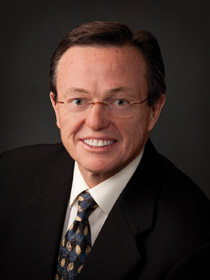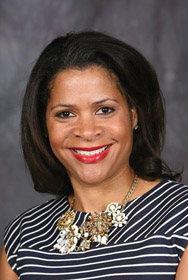Planning for retirement looks different depending on your age.
The average retirement age in the United States was just 57 years old in a 1991 Gallup poll, but it’s been steadily rising in the decades since, thanks to a combination of increased life expectancy rates, financial necessity and changing attitudes toward aging. This year, polls showed an average retirement age of 62, with non-retirees expecting to leave the workforce no earlier than 66 years old.
NorthBay biz reached out to three local financial planning experts and asked them to break down what questions people at different stages of life should be asking themselves now to ensure that, whenever they decide to retire, they’ll be better prepared for the future.
Jeff Stoffer is a chartered financial analyst (CFA), certified financial planner (CFP) and owner of Stoffer Wealth Advisors in San Rafael. Ylisa Sanford Seymour is a CFP and co-owner of Sanford and Seymour, an Ameriprise Financial practice, in Santa Rosa. Tim Delaney is a behavioral investment adviser, CPA and managing partner of JDH Wealth Management in Santa Rosa.
Getting started: ages 20 to 35
People in this age bracket often have a long list of goals: finding a career, getting married, starting a family, buying a first home. Often, saving for retirement doesn’t come in near the top of that wish list. While retirement may seem a million miles away, our advisers agree that the habits you form in these years may have the biggest impact on the type of retirement you can look forward to.
 “One of the best things you can do early on is practice sound principles of managing your money,” advises Stoffer. “Spend less than you earn, know where your money goes by tracking it in some fashion, and make sure it’s going toward those things that matter most. Make sure one of those things is saving!”
“One of the best things you can do early on is practice sound principles of managing your money,” advises Stoffer. “Spend less than you earn, know where your money goes by tracking it in some fashion, and make sure it’s going toward those things that matter most. Make sure one of those things is saving!”This means taking stock of your current values and priorities and determining your top financial goals, a step that’s especially important for couples to do early on so they’re on the same page moving forward.
Many at this age struggle with whether to begin saving or pay down their debts. Seymour believes it’s important to distinguish between “good debt,” such as student or home loans, and “bad debt,” such as credit cards or car loans. While getting rid of “bad debt” should be a priority, she believes it’s never too early to start saving for retirement. Seymour suggests people in this age bracket begin by maxing out a Roth IRA. With a 2014 maximum contribution level of $5,500 per person under the age of 50, the amount won’t feel too daunting, but can still have a significant impact on long-term savings.
“Part of what I do is show people, numerically, the impact of waiting to save,” she says. “You don’t get the compounding effects of time if you’ve waited 10 or 15 years because you’re paying off debt exclusively.”
 Delaney is more wary of debt accumulation at this stage, advising clients to pay off credit cards, car loans and student loans before saving for retirement, unless an employer offers to match 401(k) plan contributions. “You can quantify how much you’re saving if you pay off debt, with credit card interest rates of up to 18 to 22 percent, but stock market gains are more volatile,” he says.
Delaney is more wary of debt accumulation at this stage, advising clients to pay off credit cards, car loans and student loans before saving for retirement, unless an employer offers to match 401(k) plan contributions. “You can quantify how much you’re saving if you pay off debt, with credit card interest rates of up to 18 to 22 percent, but stock market gains are more volatile,” he says.Delaney also suggests that people of all ages should have an emergency fund of three to six months in earnings set aside, not making money in the market, before beginning to save for retirement. He stresses that by making prudent choices now, such as opting for a 15-year mortgage instead of a 30-year, even if it means scaling back on the house you can buy, you can establish healthy habits and learn to live on less.
“One of the things I hear most from clients in retirement is that they wish they didn’t still have a mortgage,” says Delaney. “It’s a big check they have to write every month and a debt they’ll take to the grave—and that their kids will inherit.”
Continuing to build: ages 36 to 50
 Those in this age bracket are often wearing many hats, busy with work, children and helping their own aging parents. At this time, it’s especially important to have a realistic savings and investment plan in place, helping ensure financial surprises don’t become catastrophes. Seymour conducts annual financial audits for clients at this stage to make sure their numbers are still on track and checks in quarterly to make sure nothing falls through the cracks.
Those in this age bracket are often wearing many hats, busy with work, children and helping their own aging parents. At this time, it’s especially important to have a realistic savings and investment plan in place, helping ensure financial surprises don’t become catastrophes. Seymour conducts annual financial audits for clients at this stage to make sure their numbers are still on track and checks in quarterly to make sure nothing falls through the cracks.“What’s important to me as a financial adviser is helping clients achieve their goals within what’s possible,” she says. “It’s not helpful to tell people to save $1,000 per month if they only have $500. It has to be actionable advice or they can feel defeated.”
Delaney counsels clients at this stage on the importance of staying the course and not overreacting to the bumps in the road that are inherent to investing.
“The two human behaviors I try to work with people on all the time are greed and fear,” he says. “The empirical data shows that what torpedoes most people’s outcomes isn’t their investments, it’s their behaviors.” Greed can make people purchase what they can’t afford or try to get rich quick on a risky investment, while fear can make people jump out of the market and derail their long-term plans.
During the recent recession, many people in this age group got burned in the market and in real estate and are now hesitant to jump back in, but Stoffer feels that’s a mistake.
“In the 35 to 50 timeframe, it’s important to have a good mix of investments and to make sure those investments are diversified and positioned for growth,” he says. “By not having assets or investments that appreciate, you’re subjecting yourself to the risk of inflation.”
Stoffer stresses that, with our life expectancies growing ever longer, investing over the long-term is key.
“I like to remind people that the math of retirement has changed,” he says. “Years ago, people worked for 30 or 40 years, retired and then died within 15 years. People are living longer now, and if they expect to save for 10 years and live on that for 30 or 40 years, that math just doesn’t work. Not unless you’re saving one heck of a lot of money.”
Staying the course: ages 51 to 65+
According to Stoffer, people in this age group come in with many questions, but they all boil down to these: Can I retire? Do I have enough money saved? Will I run out? To answer these, people need to look not only at their bank statements, but also at the lives they envision for themselves in the years ahead.
A decade out from retirement, it’s time to imagine, with as great a degree of specificity as possible, what you want your days to look like when you’re 65, 70 and older. For many, working either full or part time isn’t just something they have to do, but something they want to do. (See “The Changing Landscape of Retirement,” below.)
“I have this belief that baby boomers are essentially doers, as that’s all we’ve been doing for the last 40 years,” says Stoffer. “To completely stop working is a big deal, so it’s a good idea to have other interests lined up.”
Small business owners often come in with their own set of concerns as they look toward retirement. In these cases, advance planning is key to a smooth transition, both for the business owner and for employees.
“Selling a business can be a very lucrative part of one’s retirement,” says Seymour. “It should be, as there’s a lot of blood, sweat and tears that go into building a business, but if there’s no family member or clear successor, it can be an issue.” She suggests that business owners begin to look for someone to mentor or another business in the area that they could partner with up to 10 to 15 years prior to retirement.
Delaney sometimes recommends that small business owners hire a business coach who can help them think through what they need to do to ensure a smooth transition.
“A coach can help them find out the strengths and weaknesses in the company, what they might be able to sell it for, and offer advice they may not have heard. It can really make a huge difference in how it goes.”
Seymour says that, in terms of investments, those in this age bracket should be focused more on wealth preservation than growth. Delaney agrees that this isn’t the time to be taking unnecessary risks with your money to try to make up for lost time.
“As long as you have a five- to 10-year minimum investment horizon, you can be in the market,” he says. “If it’s shorter than five years, your money shouldn’t be in the market, because there’s no time to get it back up if the market tanks.”
Most important, don’t let fear prevent you from crunching your retirement numbers early, as delaying will often only make the choices harder.
“I often get people coming in within six months to two years of retiring, but if you start planning in the 50- to 55-year-old range, when you have another 10 to 15 years, there are more options and levers to pull,” says Stoffer. “Remember, your kids can take out student loans, but you can’t take out loans for retirement.”
Your best financial tool
Seymour cautions that there’s no magic bullet in retirement planning, as each individual’s circumstances are different, but there are some straightforward rules we can all take to heart at any age.
“Live within your means,” she counsels. “Spend less than you earn and pay yourself first. As a general rule, if you’re saving 20 percent of your gross income, you’re probably doing all right.”
Delaney agrees that living within your means is your best financial tool. “Your investments are very important, but spending is a part of your behavior and something you can control,” he concludes.
Stoffer finds that people often come in wanting to know for certain whether they have enough money for retirement, but notes it’s rarely a simple “yes” or “no” answer.
“There are so many moving parts to a financial plan, such as inflation, the returns on your investments, your ability to save and whether or not you have large emergency expenses,” he says. “All you can do is have good habits, have a good structure in place and do those things that are going to maximize the probability of your success.”
The Gradual Retirement
Patricia Sarris, owner of A Party Center in San Rafael, turned 66 in August. Like many of her baby boomer contemporaries, she isn’t ready to walk away from a business she loves just yet. Sarris first began working the counter at A Party Center (then Easy Rental and Sales) back in 1982 for a whopping $3.80 per hour, learning the ropes of the multi-faceted business over the years. She became a buyer and officer of the company by 1988, a co-owner by 1997 and, in 2005, she became sole owner of the store, which specializes in party supplies and equipment rentals for corporate events, weddings and private parties of all sizes.
It’s the variety of jobs she handles daily—everything from designing to human resources to replacing blown fuses—that Sarris says she loves most about the business, which employs 14 to 18 people depending on the season.
“I like that I meet a lot of different people and am challenged on so many levels,” she says. “I really enjoy learning things I didn’t know about before and then conquering them.”
Three years ago, her daughter, Kali Sarris, came on board full-time as a store manager and vice president. Patricia is hoping to keep up her own current work schedule until age 70 or 72 and then start to cut back on days in the store, with Kali taking on increasing responsibilities.
“We haven’t gone into clear details about an end date yet or whether I would stop what I’m doing or stay in some capacity,” says Sarris. “My basic plan right now is to gradually step back and have more time to myself and more freedom in my life.”
That slight shift in freedom can make a big difference, like being able to come in at 9 a.m. (instead of 8:30 a.m.) and letting Kali handle the rush of getting the delivery drivers out in the morning. Sarris says that a smaller, independent business like hers seems to lend itself well to this type of incremental turnover, which benefits not only her and her daughter but also their customers, who can depend on always having someone with the right information on hand.
“You want to be helpful to someone taking over your business, especially your child,” she says. “You want it to go well, but you don’t want to be in the way. I feel graced and lucky to now have this role to play.”
Sarris already enjoys being able to travel often, whether for pleasure, on buying trips for the store or in her role as president of the California Rental Association. She says the one thing she’s most looking forward to in her gradual retirement is ditching the anxiety that is a small business owner’s constant traveling companion.
“With owning a business, there’s a lot of responsibility and all these deadlines you always have to meet,” she says. “Not having that pressure is probably what I’m looking forward to the most.”
The Changing Landscape of Retirement
Merrill Lynch Global Wealth Management, in partnership with Age Wave (a consulting firm specializing in population aging issues), conducted a groundbreaking study in March 2014 into the new realities of retirement. Their findings were used to create the new Merrill Lynch Clear program, designed to address the topics that people said mattered most to them in today’s retirement: health, home, family, finance, giving, work and leisure. Merrill Lynch Clear’s goal is to make educational and planning resources more accessible for people at every stage of retirement planning.
Among the findings of the Age Wave study:
• Nearly three out of four (72 percent) of pre-retirees older than age 50 say their ideal retirement will include working.
• Almost half (47 percent) of current retirees have worked or are planning to work during their retirement years.
• Today, 40 percent of people age 55+ are working—a level not seen among this age group since the 1960s.
• 80 percent of working retirees polled say they’re doing so because they want to, not because they have to.
• When asked the most important reason to work, working retirees were twice as likely to say “staying mentally active” (62 percent) than to say “for the money” (31 percent).
• Nearly three out of five (58 percent) working retirees change to a different line of work in retirement, and they’re three times more likely to become entrepreneurs than younger workers.
Results also indicated that people now tend to view retirement as consisting of four distinct phases:
• Pre-retirement . Five years before retiring, 37 percent of pre-retirees who want to continue to work in retirement have taken significant steps to prepare for their post-retirement careers.
• Career intermission . Rather than transitioning straight into their post-retirement careers, more than half (52 percent) of working retirees took a break directly after retiring, averaging 2.5 years.
• Reengagement . On average, people work in these post-retirement careers for nine years. Compared to younger workers, people in this phase were nearly five times more likely to work part-time (83 percent vs. 17 percent) and three times more likely to be self-employed (32 percent vs. 11 percent).
• Leisure. In this last phase of retirement, people prefer to focus on relaxation and travel over work responsibilities.
All data courtesy of Merrill Lynch Global Wealth Management.




